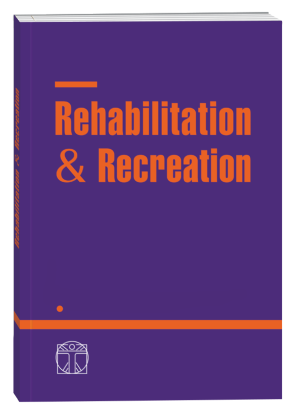USE OF AUGMENTED REALITY IN THE TREATMENT OF CHILDREN AND ADOLESCENTS: STATISTICAL DATA AND PERSPECTIVES
DOI:
https://doi.org/10.32782/2522-1795.2023.17.23Keywords:
augmented reality, virtual environment, treatment, children, adolescents, statistical data, effectiveness, perspectives.Abstract
The purpose of the study is to analyze statistical data related to the use of augmented reality (AR) in medical practice, to evaluate the effectiveness of this technology and to identify the prospects for its use to improve the results of treatment and the psychological well-being of children and adolescents. Material. Statistical information related to the use of AR in the treatment of children and adolescents was organized according to literary sources, scientific publications, clinical studies and reports of medical centers; data were processed and analyzed using statistical methods. An important aspect was the identification of common trends, positive results and possible challenges in the application of AR in medical practice. Specialized software tools, such as statistical packages and data visualization programs, were used for more detailed data processing. The dynamics of the use of AR in the rehabilitation of children with autism in the period from 2019 to 2023 are presented in the form of diagrams, and the results of the assessment of the effectiveness of AR in the rehabilitation of children with autism are formed. The results. Most studies show positive results in the use of AR for the treatment of children with various pathologies, such as oncological diseases, rehabilitation after injuries and operations, autism, etc. There has been an increase in the percentage of AR use in the rehabilitation of children with autism over the past 5 years: 2019 – 20%; 2020 – 30%; 2021 – 45%; 2022 – 55%; 2023 – 65%. The generalized results of evaluating the effectiveness of AR in the rehabilitation of children with autism demonstrate the following: a decrease in the level of sensory preference – 40%; improvement of social skills – 55%; reduction of aggressiveness and uncontrolled behavior by 50%; development of speaking skills – 35%. The average duration of a rehabilitation session using AR: 30 minutes. The percentage of parents’ satisfaction with the results of rehabilitation using AR: 90%. Conclusions. The growing interest in the use of AR technology in the medical field is due not only to its innovativeness, but also to the prospect of improving treatment outcomes. One of the key aspects of the use of AR is the possibility of creating virtual simulators for physical therapy, which allow patients to more effectively restore motor activity after injuries or surgeries. In addition, AR-based interactive applications can be used for psychotherapy and patient support, helping to reduce stress and improve psychological well-being. Virtual environments can be used to improve cognitive activity and involve patients in the educational process. It should be noted that the use of AR is also accompanied by certain challenges and limitations, such as possible negative effects on the eyes and psyche, as well as technical aspects of implementation. However, in the end, statistical data and analysis of prospects testify to the relevance and validity of the introduction of this technology into medical practice to improve the health and well-being of younger patients.
References
Гончарова Н.О. Технологія доповненої реальності в підручниках нового покоління. Проблеми сучасного підручника. 2019. № 22. С. 46–56. URL: https://lib.iitta.gov.ua/716685/1/9c8b6a35b1ea5b7130c1ae9942824e97.pdf (дата звернення: 10.10.2023)
Імерсивні технології в освіті: збірник матеріалів І Науковопрактичної конференції з міжнародною участю. / упоряд.: Н.В. Сороко, О.П. Пінчук, С.Г. Литвинова. Київ : ІІТЗН НАПН України, 2021. 169 с.
Пінчук Ольга. Імерсивні технології в навчанні: проблема чи перспектива? О. Пінчук. Proceedings of the XII International scientific-practical conference «INTERNETEDUCATION-SCIENCE» (IES-2020), Ukraine, Vinnytsia, 26-29 May 2020. Vinnytsia : VNTU, 2020. С. 257–258.
Пінчук О., Лупаренко Л. Дидактичний потенціал використання цифрового контенту з доповненою реальністю. Modern Information
Technologies and Innovation Methodologies of Education in Professional Training Methodology Theory Experience Problems. 2022. С. 39–57.
Тарангул Л., Романюк С. Використання технології доповненої реальності в освітньому процесі закладів вищої освіти. Проблеми освіти. 2022. Випуск 1 (96). С. 187–204.
Чарченко П.С. Погляд крізь майбутнє: навчати, використовуючи віртуальну реальність. Члени редакційної колегії. 2019. 140 c.
Augmented and Virtual Reality Survey Report. Perkins Coie LLP and the XR Association, Vol. 3. 2019. URL: https://www.perkinscoie. com/images/content/2/1/v4/218679/2019-VRARSurvey-Digital-v1.pdf (дата звернення: 10.10.2023).
Lee K. Augmented Reality in Education and Training. Techtrends Tech Trends. 2012. Vol. 56. P. 13–21. URL: https://doi.org/10.1007/s11528-012-0559-3 (дата звернення 10.10.2023).
Saez-Lopez J. M., Sevillano-Garcia M. L., Pascual-Sevillano M. A. Application of the Ubiquitous Game with Augmented Reality in Primary Education. Comunicar. 2019. № 27 (61). Р. 71–81.
University of Sussex. URL:http://www.sussex.ac.uk/tel/learningtechnologies/immersivetech (дата звернення: 10.10.2023).
Downloads
Published
How to Cite
Issue
Section
License

This work is licensed under a Creative Commons Attribution-NonCommercial-NoDerivatives 4.0 International License.











